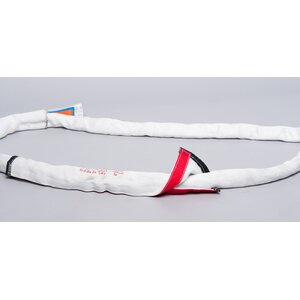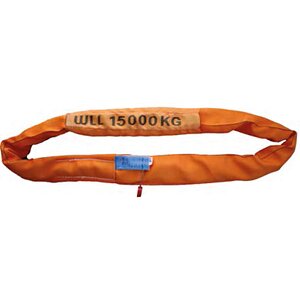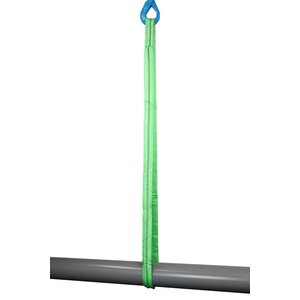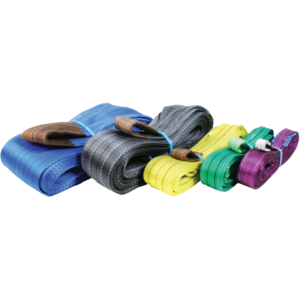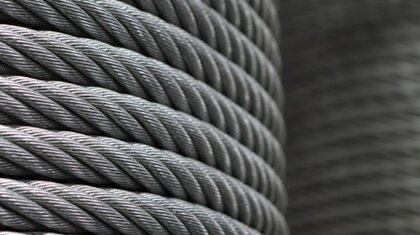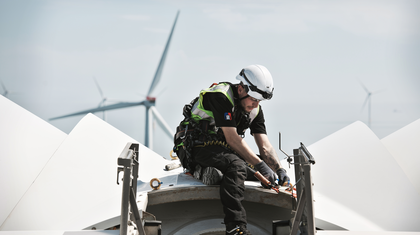Webbing & Round Slings Load Chart
Not sure if your lifting safely with textile slings? Here are some guides to the factors that should be considered including how the textile sling is lifting, the degrees of the sling during the lift and more.
| Working Load Limit (WLL) in kg for Round Slings and Webbing Slings | |||||||
| Safety colour code | |||||||
| 7:1 Safety Factor | 7° to 45° | 45° to 60° | |||||
 |
 |
 |
 |
 |
 |
 |
|
 |
 |
 |
 |
 |
 |
 |
|
| Mode Factor | 1.0 | 0.8 | 2.0 | 1.4 | 1.0 | 1.4 | 2.0 |
| Violet | 1000 | 800 | 2000 | 1400 | 1000 | 1400 | 2000 |
| Green | 2000 | 1600 | 4000 | 2800 | 2000 | 2800 | 4000 |
| Yellow | 3000 | 2400 | 6000 | 4200 | 3000 | 4200 | 6000 |
| Grey | 4000 | 3200 | 8000 | 5600 | 4000 | 5600 | 8000 |
| Red | 5000 | 4000 | 10000 | 7000 | 5000 | 7000 | 10000 |
| Brown | 6000 | 4800 | 12000 | 8400 | 6000 | 8400 | 12000 |
| Blue | 8000 | 6400 | 16000 | 11200 | 8000 | 11200 | 16000 |
| Orange | 10000 | 8000 | 20000 | 14000 | 10000 | 14000 | 20000 |
| Orange | 12000 | 9600 | 24000 | 16800 | 12000 | 16800 | 24000 |
Slings are renowned for quality and reliability and are available in the UK exclusively through the Certex distribution network.
Inspection
Slings should only be used by trained operatives, and should be inspected before, during, and after use. Unidentified or damaged slings should not be used. Slings should never be modified or repaired in any way. Examine thoroughly for surface chafe, cuts in the webbing or selvedges or the covers and core of Round slings. Also examine the stitching of seams and eyes for any deterioration, and any end fittings for cracks or damage. Chemical damage will show as local softening or powdering of the sling or its outer cover. In case of cuts or significant abrasion or of any case of doubt, the sling should be taken out of service and the advice of Certex sought.
Environment
The majority of slings are polyester (Blue label) which is resistant to moderate strength acids but is damaged by alkalis (see table for guidance). Polyamide/Nylon (Green label) is virtually immune to alkalis but is damaged by acids. Polypropylene (Brown label) is little affected by acids or alkalis but is damaged by some solvents, tars and paints. Generally, do not expose the slings to chemicals, or temperatures above 800C and below 00C. Never expose to direct heat or flames.
Mode of use
Establish the weight of the load, and with reference to the safety chart ensure that the selected mode of use will give a sufficiently high W.L.L. If the slings are to be used in a multi-leg arrangement, the angle formed between the legs should be not less than 300 or greater than 900. Position the bight for a choke lift at 1200 (natural angle) to prevent friction being generated (Protection at the bight is recommended). Ensure that the sling is of sufficient length to secure the load in the correct configuration.
Preparation of lift
Secure the sling firmly to the load by hooks (facing outwards) onto lifting points or shackles etc. When attaching more than one sling to the hook of the appliance use a shackle to join the slings and avoid overcrowding the hook. Ensure labels and stitching are away from hooks and fittings. Do not engage the sling with devices which have sharp edges that could cause damage, and do not hammer, force or wedge slings and accessories into position; they must fit freely. Use protective sleeves, patches or packing where required and position correctly to avoid abrasion. Avoid excessive opening of eyes (>200) or excessive loading of sewn parts. The sling must not be knotted, kinked or shortened in any way, and any loose parts of the load should be removed or secured.
Safe Lifting
Plan the lift, and prepare the landing area ensuring that it will take the weight. Ensure the load is free to be lifted and not, for example, bolted down. Ensure the load will remain stable when lifted, and that when more than one sling is used for a single load, the weight is properly distributed between the slings or sling legs. Position the lifting point directly above the centre of gravity. Make a trial lift and lower. Take the load steadily and avoid any shock loads. Keep fingers, toes etc clear ensuring they do not become trapped when lifting, lowering or controlling loads. Check there are no overhead obstacles such as power lines. Use an established code of signals to instruct the crane driver. Where appropriate use tag lines to control the load. Do not allow anyone to pass under or ride upon the load.
Set down
Do not suspend loads for longer than necessary and never leave unattended. In an emergency cordon off the area beneath the load. Make a trial set down, ensure the sling will not become trapped and the load will not tip when the slings are released. Never drag slings over floors etc. or attempt to drag a trapped sling from under a load.
Never use a sling to drag a load. Place the hooks of free legs back onto the master link and take care to ensure that empty hooks do not become accidentally engaged.
Storage
Slings should be inspected and stored properly away from any contaminates, heat or direct sunlight (ultra violet). They should be cleaned with clear water and dried naturally. Store on a rack or rust-free hook in a free circulation of air.
